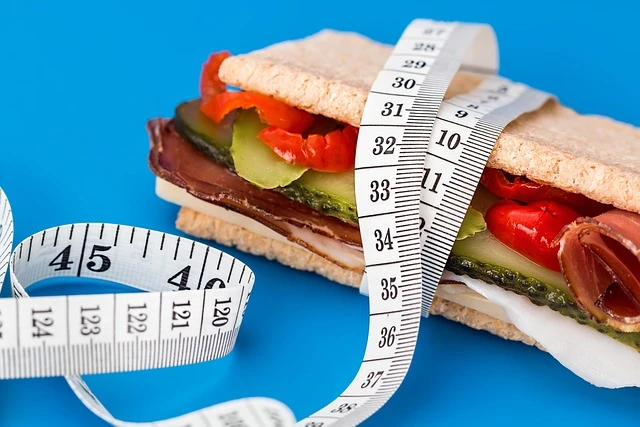Understanding Weight Plateaus - How to Adjust Your TDEE for Continued Progress

Learn how to identify, understand, and break through weight loss plateaus by making strategic adjustments to your TDEE and overall approach.
Understanding Weight Plateaus: How to Adjust Your TDEE for Continued Progress
Weight loss plateaus are a common and natural part of any fitness journey. Understanding how to identify, analyze, and overcome these plateaus through strategic TDEE adjustments is crucial for continued progress.
Understanding Weight Plateaus
What is a Plateau?
- Definition
- Normal vs problematic
- Duration considerations
- Progress indicators
- Individual variation
Common Causes
- Metabolic adaptation
- TDEE changes
- Body composition
- Hormonal factors
- Lifestyle changes
Identifying True Plateaus
Progress Metrics
- Scale weight
- Body measurements
- Progress photos
- Performance markers
- Energy levels
Data Analysis
- Weekly averages
- Trend identification
- Pattern recognition
- Variable control
- Progress rate
Metabolic Adaptation
Understanding Adaptation
- BMR reduction
- NEAT decrease
- Hormone changes
- Energy efficiency
- Recovery needs
Impact on TDEE
- Activity factor changes
- Energy expenditure
- Exercise response
- Daily movement
- Recovery demands
Strategic TDEE Adjustment
Calculation Methods
- Current maintenance
- New deficit needs
- Activity factors
- Individual response
- Progress rate
Implementation
- Gradual changes
- Monitoring periods
- Adjustment timing
- Recovery phases
- Progress evaluation
Nutrition Strategies
Caloric Adjustment
- Deficit evaluation
- Intake accuracy
- Food quality
- Meal timing
- Portion control
Macronutrient Focus
-
Protein optimization
- Intake levels
- Quality sources
- Timing strategy
- Recovery support
-
Carbohydrate strategy
- Energy provision
- Training fuel
- Recovery needs
- Timing approach
-
Fat balance
- Hormone support
- Essential needs
- Energy balance
- Quality sources
Exercise Adaptation
Training Variables
- Volume adjustment
- Intensity modification
- Exercise selection
- Rest periods
- Recovery needs
Activity Types
-
Resistance training
- Program variation
- Progressive overload
- Exercise selection
- Recovery management
-
Cardiovascular training
- Intensity levels
- Duration adjustment
- Method variation
- Energy expenditure
Recovery Optimization
Sleep Quality
- Duration needs
- Quality factors
- Routine establishment
- Environment optimization
- Recovery support
Stress Management
- Cortisol control
- Recovery techniques
- Lifestyle balance
- Mental well-being
- Support systems
Breaking Through Plateaus
Immediate Actions
- TDEE recalculation
- Food log audit
- Activity assessment
- Sleep evaluation
- Stress analysis
Strategic Changes
- Deficit adjustment
- Training variation
- Recovery enhancement
- Nutrition modification
- Lifestyle optimization
Advanced Strategies
Diet Breaks
- Duration (1-2 weeks)
- Frequency
- Implementation
- Maintenance calories
- Return strategy
Reverse Dieting
- Caloric increase
- Rate of addition
- Progress monitoring
- Adjustment timing
- Goal alignment
Psychological Aspects
Mental Preparation
- Expectation setting
- Progress perspective
- Patience development
- Support system
- Goal focus
Behavioral Strategies
- Habit maintenance
- Consistency focus
- Progress tracking
- Positive reinforcement
- Adaptive mindset
Long-term Success
Sustainable Practices
- Regular monitoring
- Proactive adjustments
- Lifestyle integration
- Support maintenance
- Goal evolution
Prevention Strategies
- Regular assessment
- Early intervention
- Program variation
- Recovery focus
- Progress tracking
Common Mistakes
Assessment Errors
- Premature reaction
- Inaccurate tracking
- Variable oversight
- Inconsistent measures
- Data misinterpretation
Implementation Issues
- Excessive restriction
- Rapid changes
- Recovery neglect
- Consistency problems
- Support absence
Special Considerations
Individual Factors
- Age influence
- Gender differences
- Medical conditions
- Medication effects
- Genetic factors
Lifestyle Impact
- Work schedule
- Family demands
- Social factors
- Travel effects
- Stress levels
Conclusion
Weight loss plateaus are a natural part of the journey, but they don't have to be permanent roadblocks. By understanding how to properly assess and adjust your TDEE, while considering all aspects of your program, you can continue making progress toward your goals.
Remember that plateaus often indicate the need for strategic changes rather than drastic measures. Focus on making sustainable adjustments while maintaining consistency in your approach for the best long-term results.

